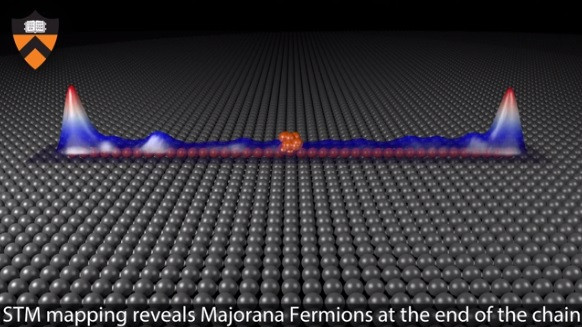Elusive Majorana Particle that is Both Matter and Antimatter Discovered

An elusive particle that is both matter and antimatter has been discovered by scientists, nearly 80 years since the search began.
The first so-called Majorana particle, named after Italian physicist Ettore Majorana who predicted its existence in 1937, was discovered by researchers at Princeton University in New Jersey.
The lead superconducting material could be instrumental in helping researchers to encode information for quantum computers, the team said.
Researchers found strong evidence of the Majorana particle, published in the journal Science. Normally, every particle has an antimatter equivalent with an opposite charge. When the two meet, they destroy one another.
However, Ettore Majorana predicted that some particles might be their own antimatter partners.
Princeton researchers observed the suspected particle using a huge microscope floating in an ultralow-vibration lab, which allowed the scientists to capture a glowing image of Majorana perched at the end of an extremely thin wire.
Ali Yazdani, a professor of physics who led the research team, said: "This is the most direct way of looking for the Majorana fermion since it is expected to emerge at the edge of certain materials. If you want to find this particle within a material you have to use such a microscope, which allows you to see where it actually is."
Despite its destructive properties, Majorana is "surprisingly stable", the researchers said. The conflicting properties render it neutral so it hardly interacts with its environment.
It is for this reason scientists want to harness the material, so they can engineer Majorana to provide a more stable way of encoding quantum information.
Yazdani said their potential discovery is different to the world-famous Higgs Boson because of its real-world uses: "This is more exciting and can actually be practically beneficial because it allows scientists to manipulate exotic particles for potential applications, such as quantum computing."
Commenting on the study, Leo Kouwenhoven, from the Delft University of Technology in Netherlands, said that while the findings were not conclusive, they could be game changing. He told Nature magazine: "The great thing about Majoranas is that they are potentially a new class of particle. If you find a new class of particles, that really would add a new chapter to physics."
© Copyright IBTimes 2025. All rights reserved.






















